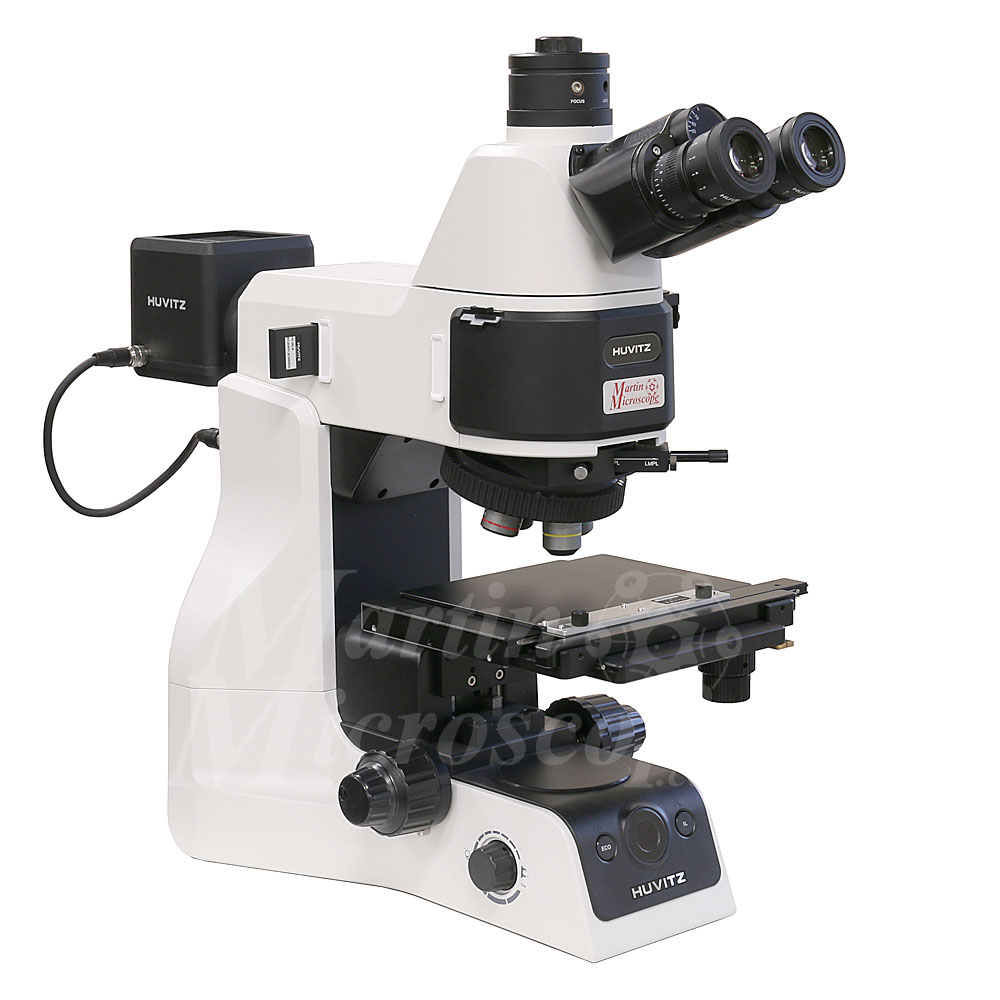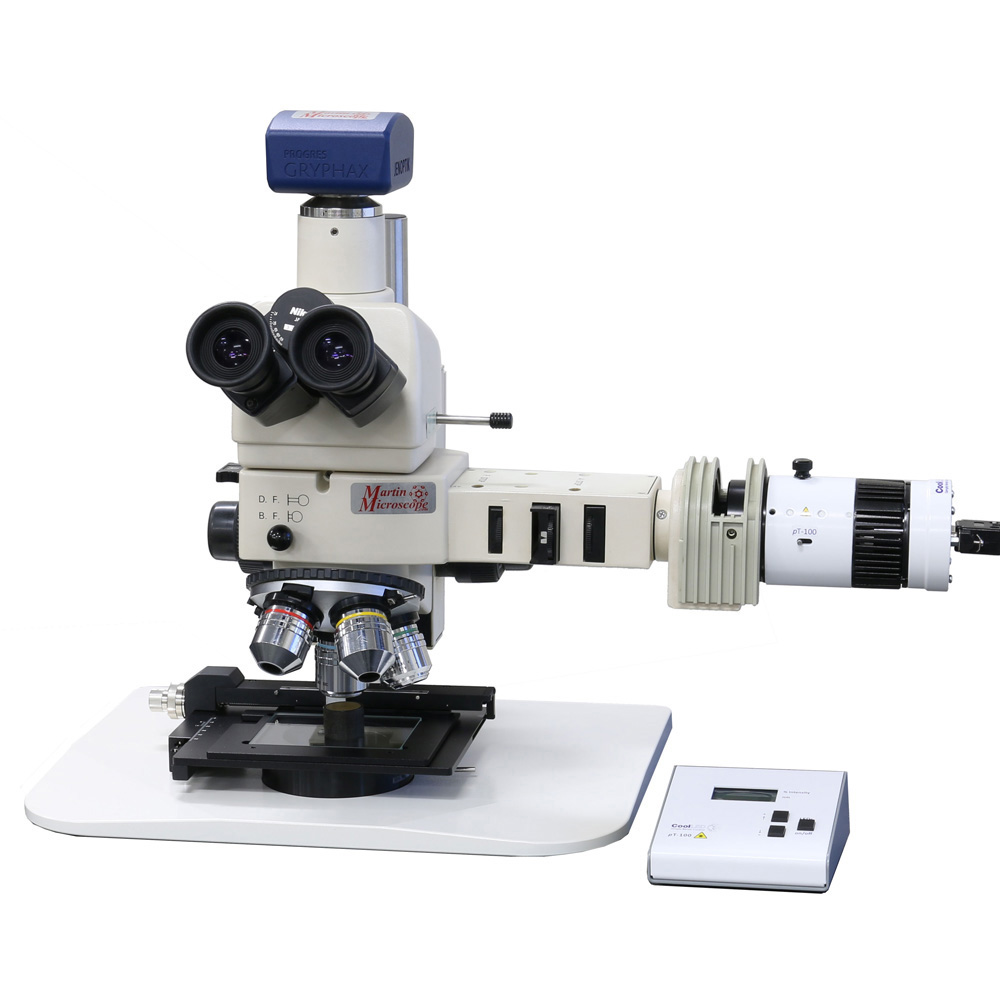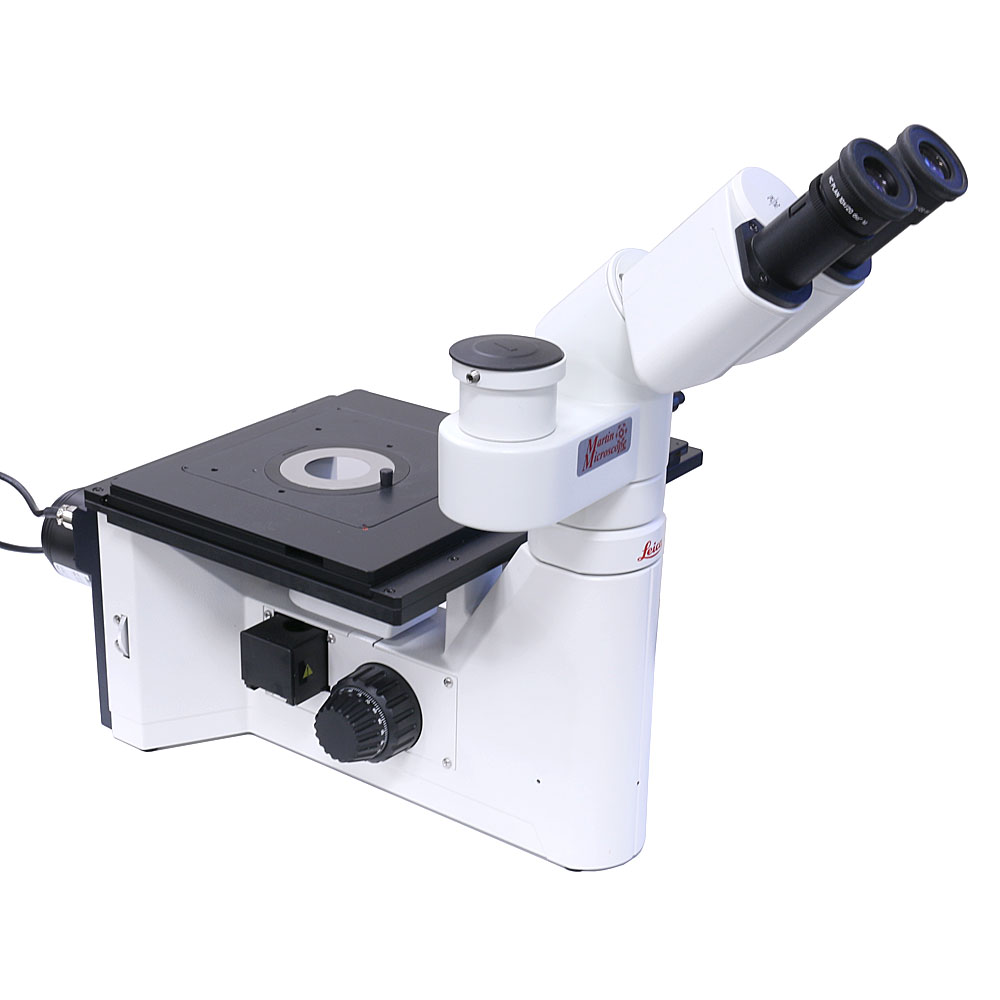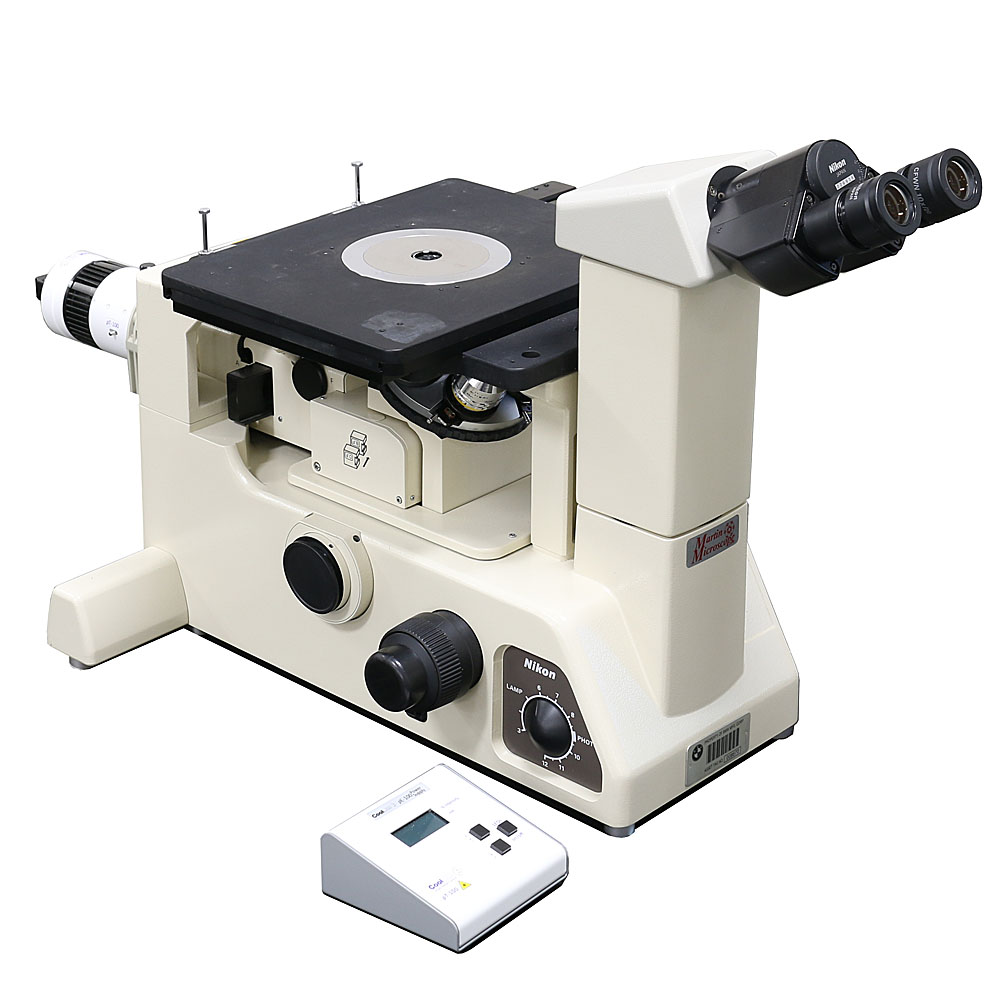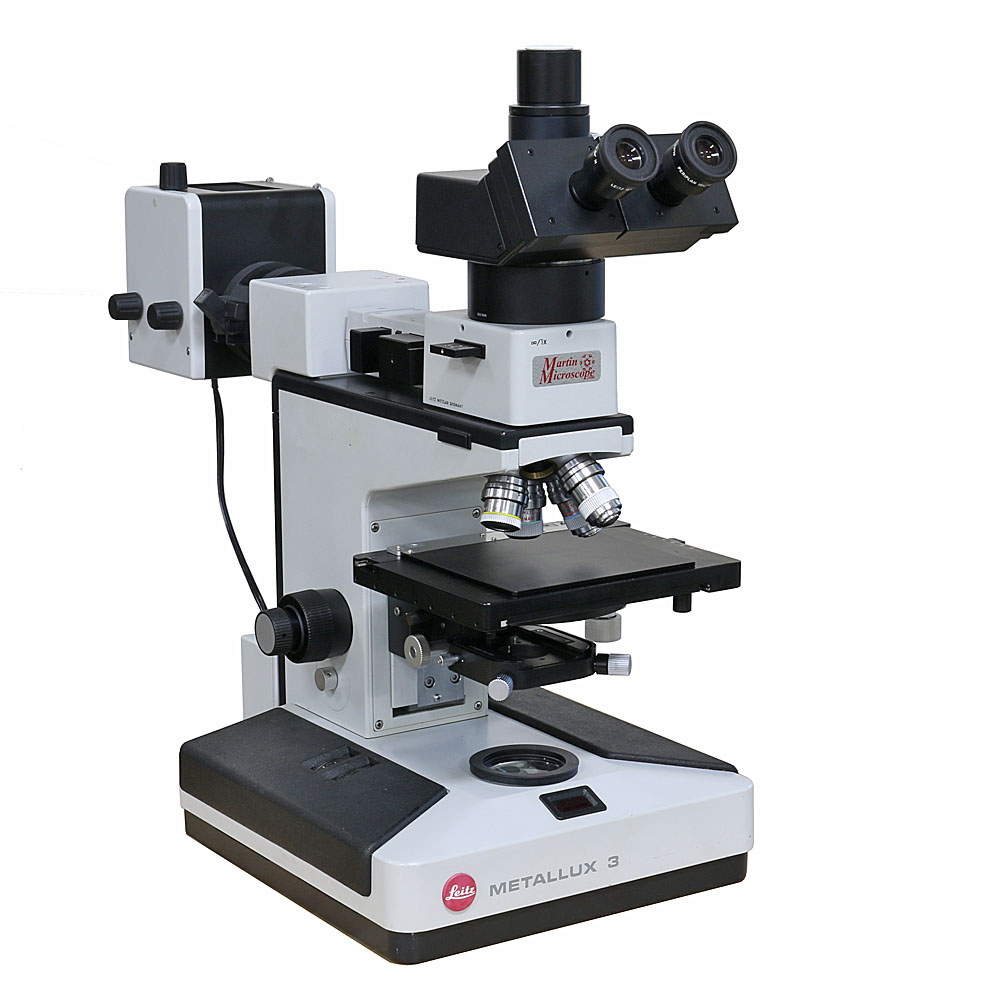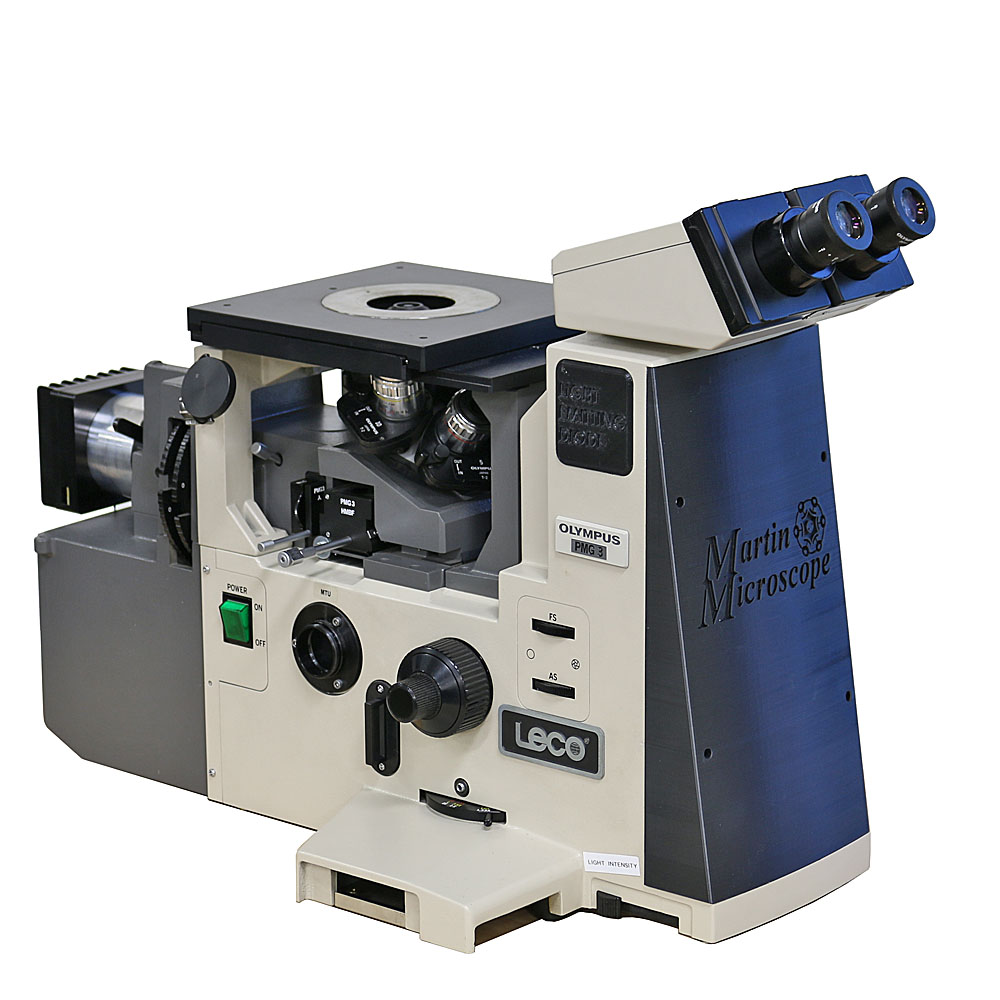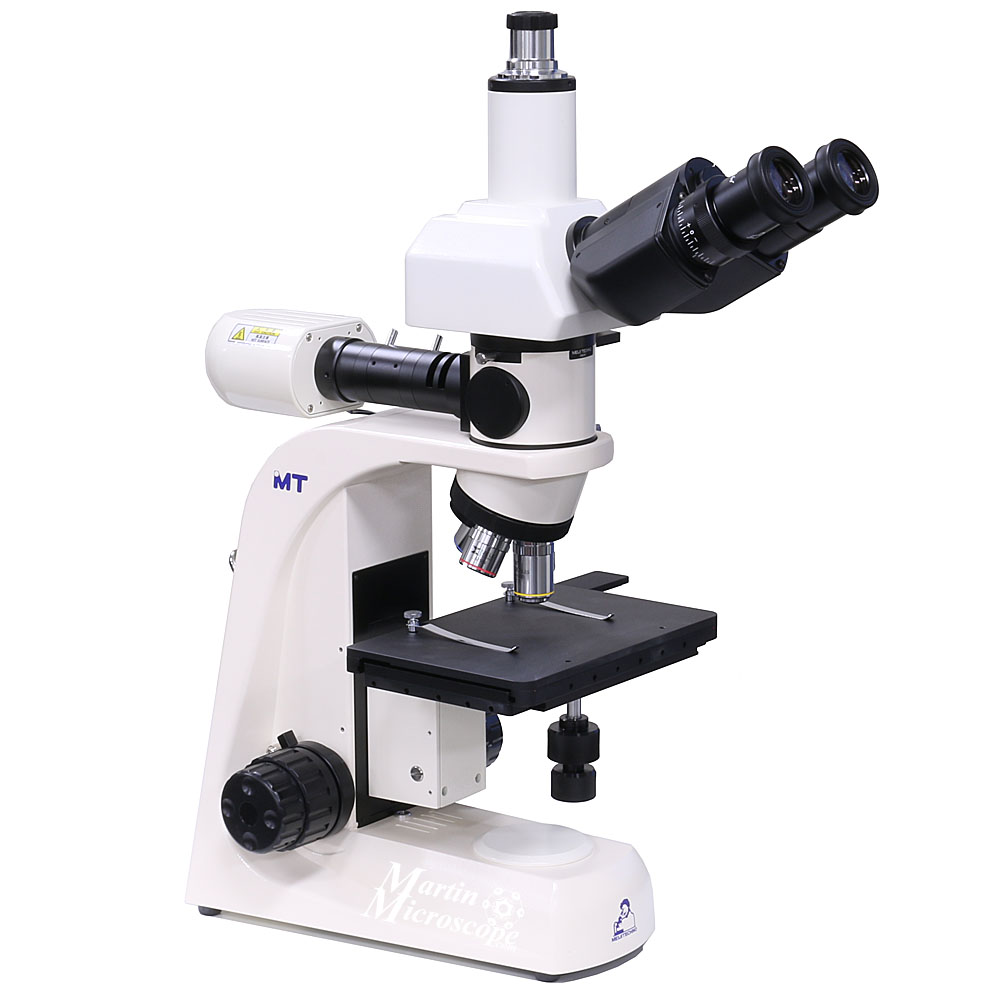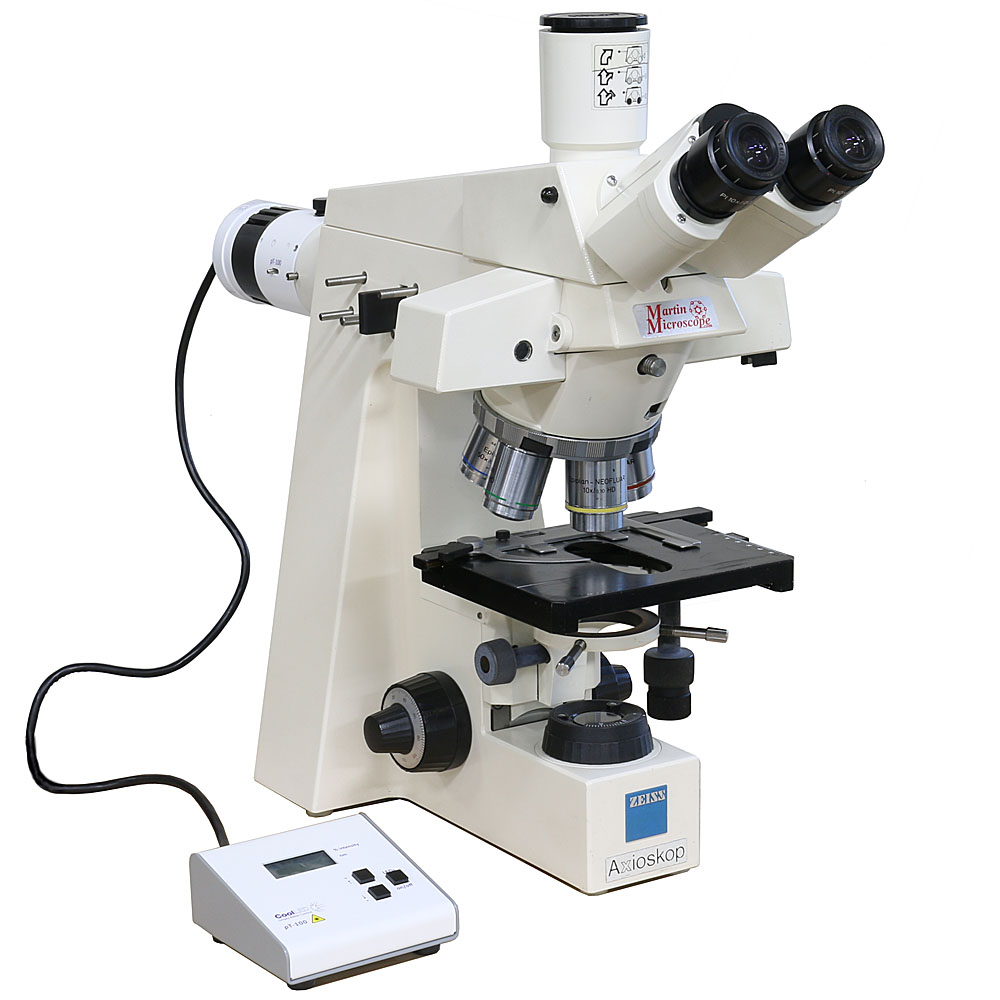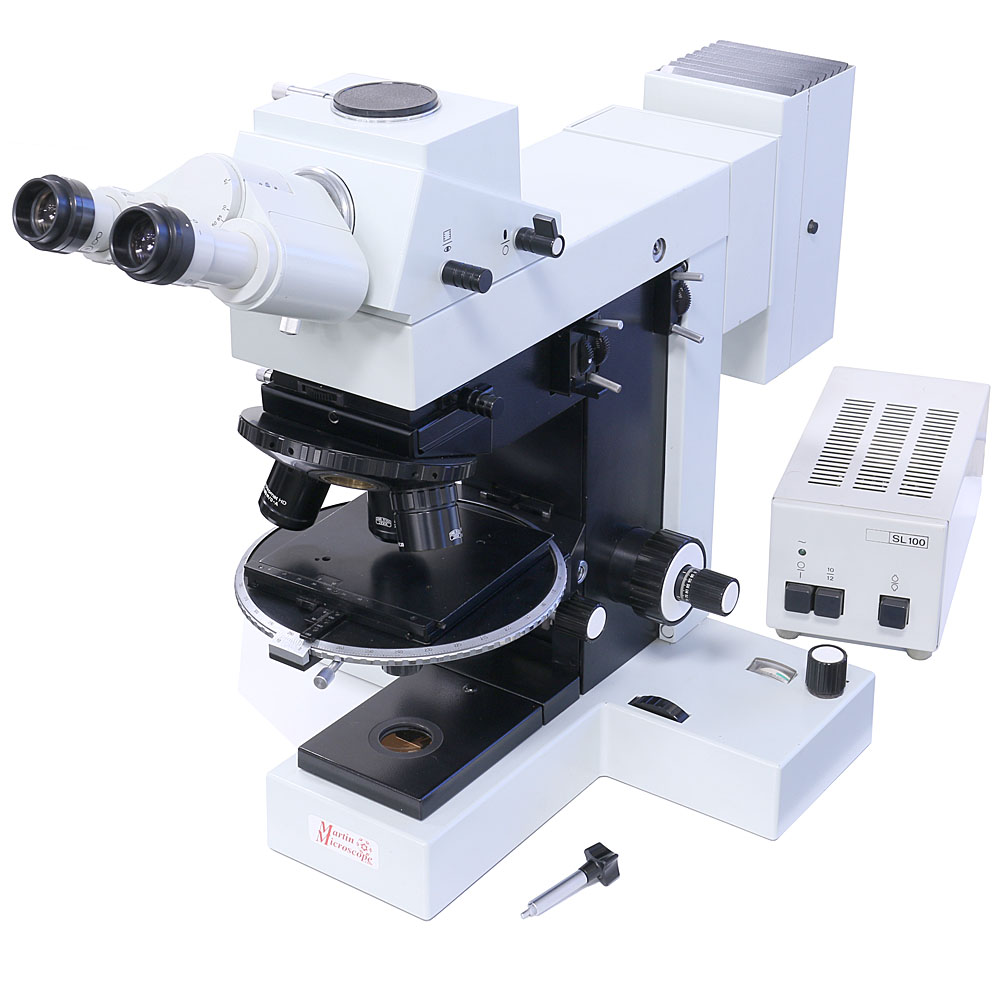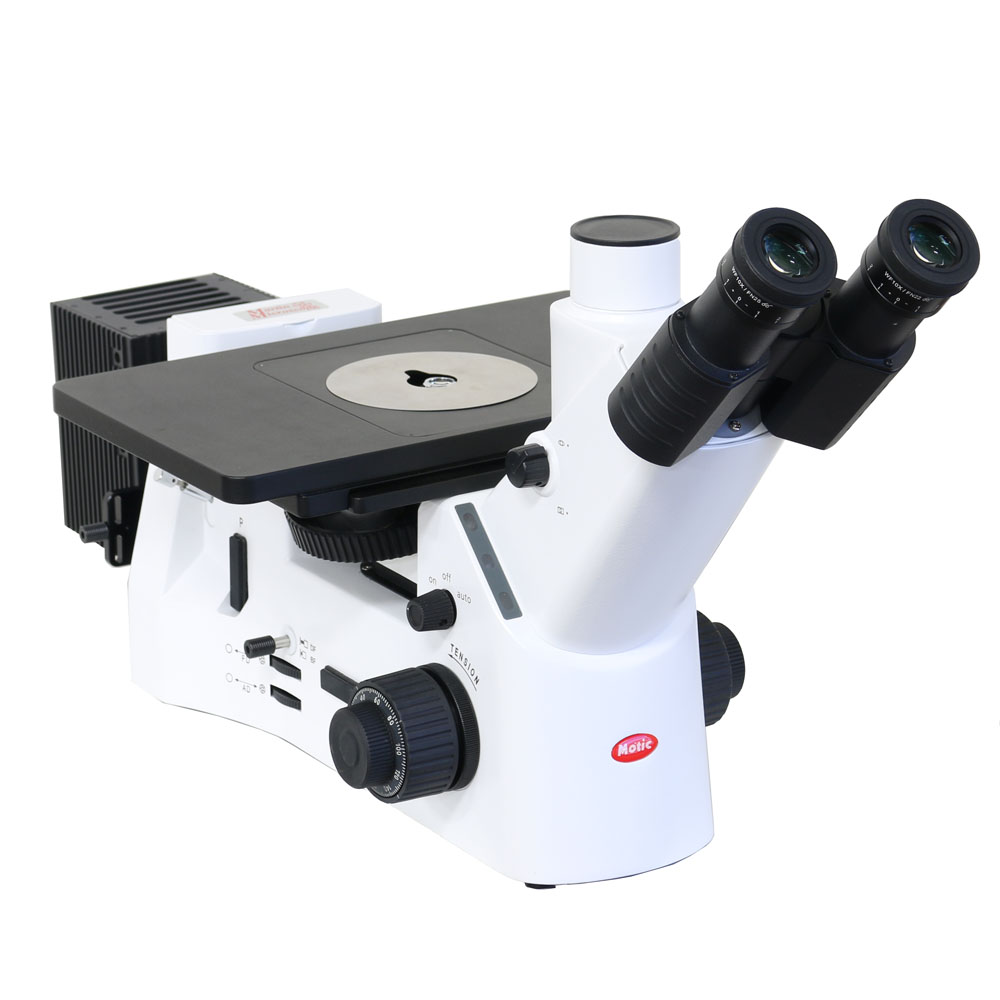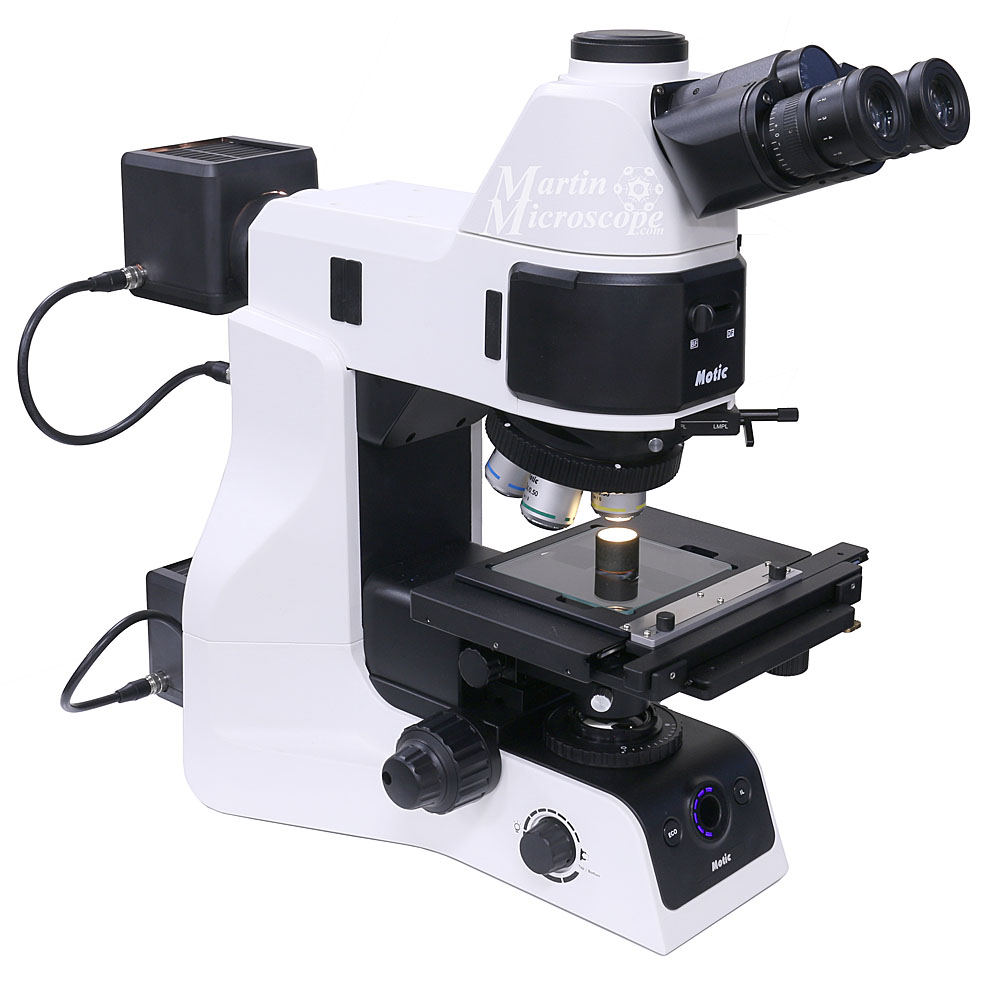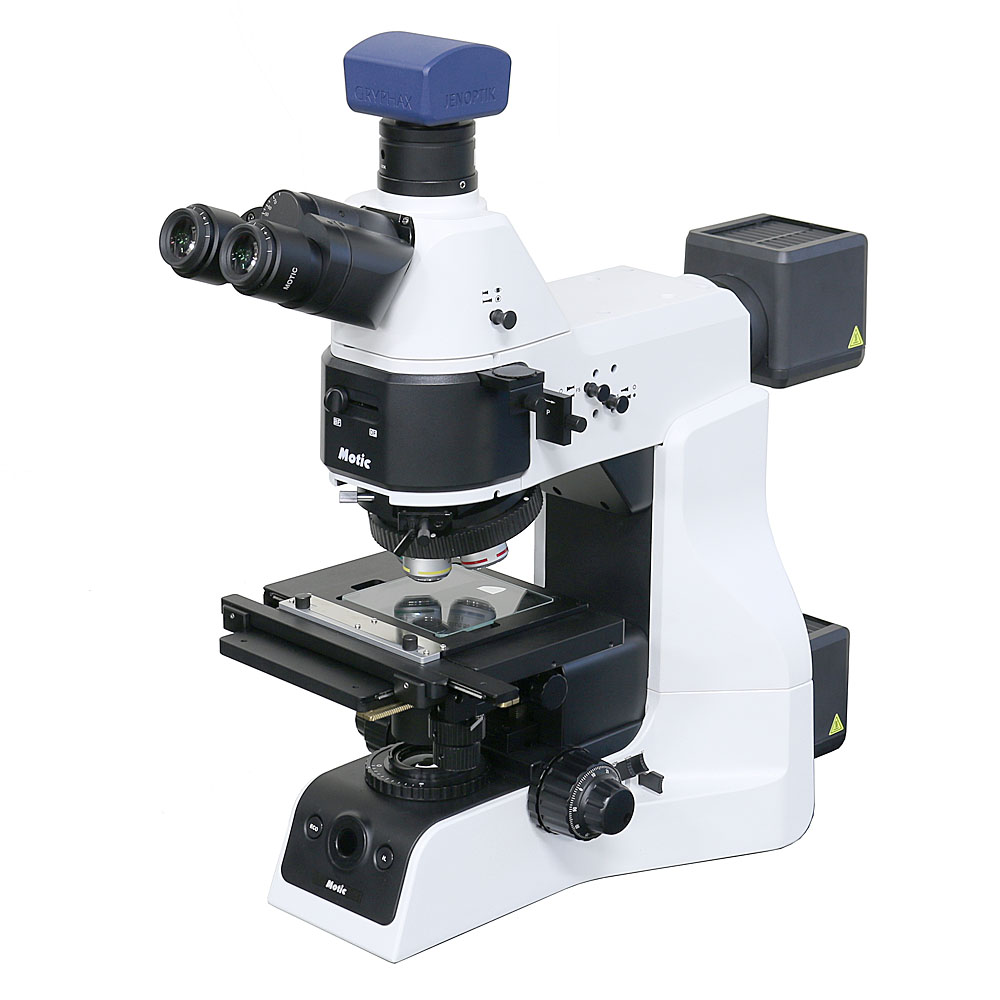Reflected Light Metallurgical Microscopes
Reflected Light Metallurgical microscopes are used to examine opaque specimens which will not transmit light. Reflected Light is also called Incident Light or Episcopic Illumination (Epi for short). The illumination is reflected off of a beam splitter – a half mirror where half the light is reflected and half passes through. The reflected light travels through the objective lens, which in this arrangement acts as both a condenser and an objective, and strikes the specimen. It is then reflected off the specimen back up through the objective lens, the half mirror, the head, the eyepieces, and finally to the eye. Many of the microscopy techniques common to transmitted light microscopes are also available for reflected light microscopes, including Brightfield, Darkfield, and DIC. Objectives on a reflected light microscope are usually corrected for use with specimens without a coverslip. For some specimens a combination of transmitted and reflected light is ideal, so certain models will offer both types of illumination. Inverted reflected light microscopes have the advantage of accepting larger specimens, and these specimens have to be flat on only one side.
Shop Reflected Light Metallurgical Microscopes
Sale
